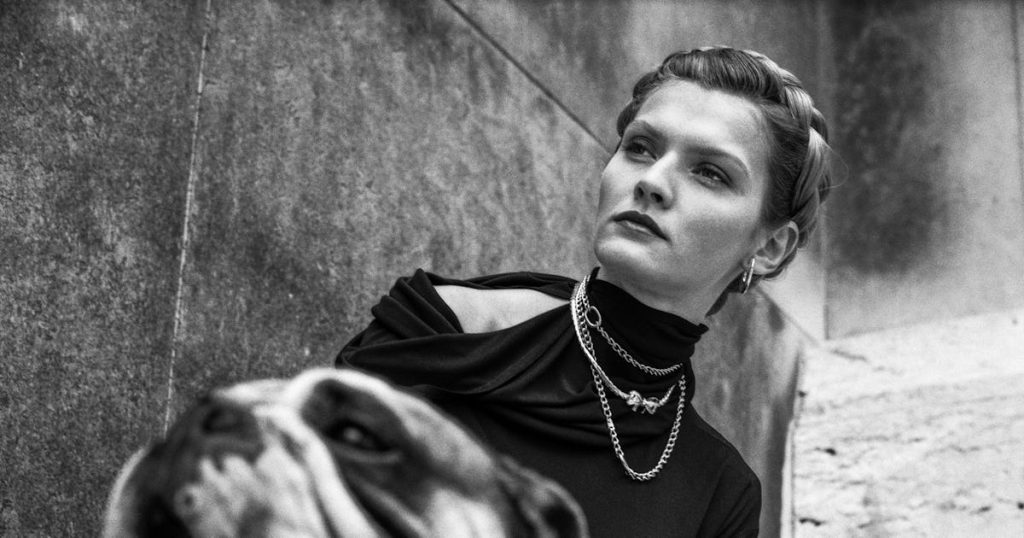There’s a certain kind of woman you see in Helmut Newton’s photographs for Pomellato’s ad campaigns, which he shot from 1982 to 1984. Ahe’s in a bar, maybe chain-smoking, definitely wearing sunglasses indoors—and the only thing brighter than the neon sign behind her is the flash of gold on her wrist. She is, in short, not waiting for anyone.
Newton captured the jewelry brand’s ads with the kind of audacity only the ’80s could stomach—jewelry ads where the women didn’t gaze longingly at diamonds, but instead lounged, smirked, and occasionally ignored you altogether. They weren’t decorative, they were declarative. Beginning September 18, those images—once full-page advertisements in glossy magazines—get their second act at Pomellato, Helmut Newton & the ’80s, a Tokyo exhibition at Omotesando Crossing Park.
What’s remarkable isn’t just how daring the photos were for their time, but how alive they feel now. In an age of quiet luxury, Newton’s Pomellato women whisper nothing. Chains cascade onto tables like spilled champagne, and the implication is always that the jewelry belongs to the woman herself.
Pomellato was founded in Milan in 1967 by Pino Rabolini; his house favored bold links and colorful stones over the traditional diamond hierarchy, creating pieces that felt wearable but never demure. By the time Newton entered the frame, Pomellato was primed for rebellion. Together, they made campaigns that were less about adornment than about autonomy.
The Tokyo exhibition acts as a time capsule for Milan in the ’80s—before globalization smoothed the edges off everything, when fashion still felt like a local dialect. There’s the Gourmette chain, its curved links both sensual and substantial, the Gate-link necklace with its geometric rigor, and the woven gold Tessute, proof that a necklace could drape like fabric without losing its armor-like authority. These are pieces meant to be seen across a room, preferably one filled with cigarette smoke and Italo-disco.
Pomellato’s Gourmette bracelet range, 1981.
Courtesy of Pomellato
“What made this collaboration revolutionary was how Newton portrayed the Pomellato woman with such beautiful, challenging non-conformity,” said Pomellato CEO Sabina Belli. “Helmut Newton’s eye captured Pomellato’s belief that ‘to wear jewelry is to bring forward a part of yourself.’”
It’s tempting to see the show as pure nostalgia, a glamorous look back at the shoulder-pad decade. But standing in front of Newton’s oversize prints, you realize how contemporary they feel. Swap the cigarette haze for LED glow, the half-empty ashtrays for half-full martinis, side-eyes for selfies, and these women could be in downtown Tokyo tonight. Jewelry, in Newton’s hands, became an attitude—a signal that power could be worn as easily as a chain necklace.
If you’re lucky enough to go, here’s what to expect: a free show, but by appointment only. Inside, Newton’s women look down at you from their oversize frames, sunglasses on, a little bored, maybe a bit amused. You leave with the sense that jewelry isn’t just about beauty or wealth, it’s about authorship.
Newton, Pomellato, and the women they captured understood something essential: jewelry isn’t a gift. It’s a mirror. And if you catch yourself in its reflection at the right moment, you might just see not who you are, but who you intend to become.

